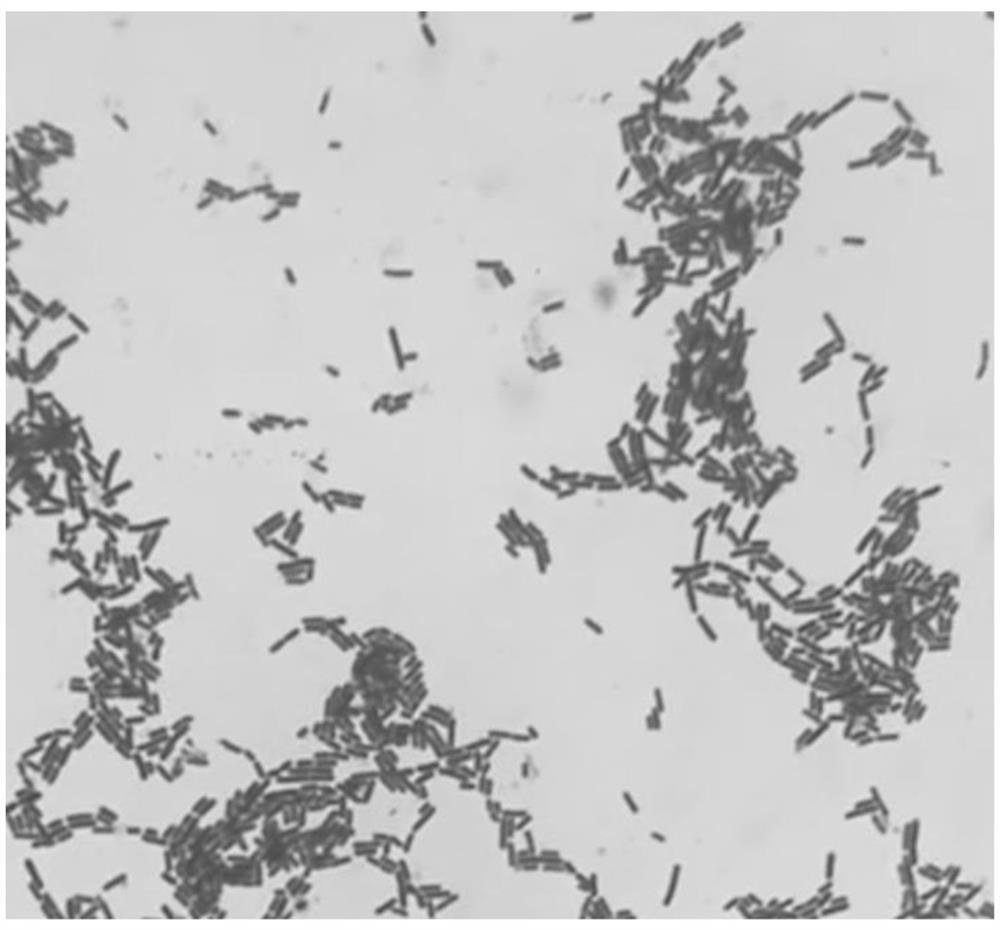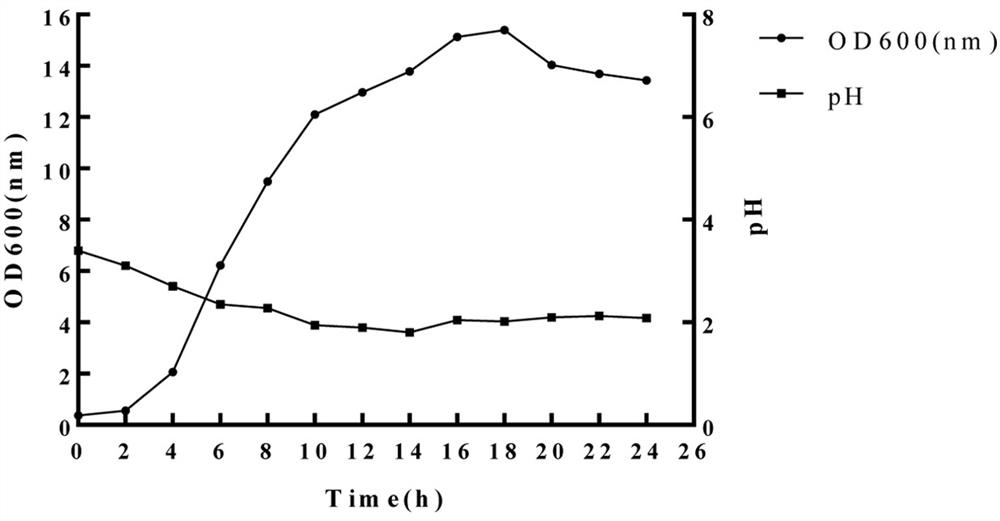Lactobacillus plantarum Lp2 and application thereof
A technology of Lactobacillus plantarum and probiotics, applied in the field of microorganisms
- Summary
- Abstract
- Description
- Claims
- Application Information
AI Technical Summary
Problems solved by technology
Method used
Image
Examples
Embodiment 1
[0023] Example 1 Screening and identification of Lactobacillus plantarum Lp2
[0024] 1. Screening of bacterial strains
[0025] The commercially available Northeast sauerkraut was isolated from lactic acid bacteria in the laboratory; -1 Gram-positive strains were selected by observing the colony morphology with Gram staining. ; The selected strains were cultured in the liquid MRS medium at 37°C for 24 hours, inoculated according to the inoculum amount of 3% of the culture medium, and continuously activated and passaged three times to ensure the vigorous growth of the bacteria.
[0026] The liquid MRS medium contains 10.0 g of peptone, 10.0 g of beef extract, 5.0 g of yeast extract, diammonium hydrogen citrate [(NH 4 ) 2 HC 6 h 5 o 7 ] 2.0 g, glucose (C 6 h 12 o 6 ·H 2 O) 20.0 g, Tween 80 1.0 mL, sodium acetate (CH 3 COONa·3H 2 O) 5.0 g, dipotassium hydrogen phosphate (K 2 HPO 4 ·3H 2 O) 2.0 g, magnesium sulfate (MgSO 4 ·7H 2 O) 0.58g, manganese sulfate (MnSO ...
Embodiment 2
[0031] Example 2 Lactobacillus plantarum Lp2 tolerance test
[0032] 1. Determination of the growth curve and acid production capacity of Lactobacillus plantarum Lp2
[0033] During the cultivation of Lactobacillus plantarum Lp2, samples were taken every 2 h, and the culture solution was analyzed as follows: the total number of bacteria was measured by spectrophotometry (wavelength 600 nm) to measure the absorbance value (OD); the pH value was measured by an acidity meter. The growth curve and pH curve of the strain are shown in image 3 ;Depend on image 3 It can be seen that 0-2 h is the lag phase of the strain, and the number and pH value of the strain do not change. After 2 h, it enters the logarithmic phase, and the number of bacteria increases linearly and rapidly. With the increase of the number of bacteria, the metabolite lactic acid is also more When the pH value decreased to about 2, the growth of lactic acid bacteria stagnated due to acid inhibition, and gradually...
Embodiment 3
[0060] Example 3. Test of adhesion ability of Lactobacillus plantarum Lp-2 to Caco-2 cells
[0061] 1. Culture of Caco-2 cells
[0062] Inoculate Caco-2 cells into cell culture flasks and culture in DMEM (Dulbecco's modified eagle medium) containing 10% fetal bovine serum + 1% penicillin-streptomycin double antibody solution at 37°C, 5% CO 2 Under these conditions, the degree of cell polymerization can reach 90% to 100% after being cultured for 5-6 days; Caco-2 cells in good growth state were inoculated on a 24-well plate (pore diameter 16 mm, effective membrane area 1.9 cm 2 ), the seeding density was 0.5×10 5 / well, 37°C, 5% CO 2 The cells were cultured for 21 days under the same conditions, and the medium was changed every other day. After observing the growth of the cells under an inverted microscope for about 21 days, the cells formed a compact monolayer.
[0063] 2. Preparation of Lactobacillus plantarum Lp2 bacterial suspension
[0064] The strain was inserted into ...
PUM
| Property | Measurement | Unit |
|---|---|---|
| diameter | aaaaa | aaaaa |
Abstract
Description
Claims
Application Information
 Login to View More
Login to View More - R&D
- Intellectual Property
- Life Sciences
- Materials
- Tech Scout
- Unparalleled Data Quality
- Higher Quality Content
- 60% Fewer Hallucinations
Browse by: Latest US Patents, China's latest patents, Technical Efficacy Thesaurus, Application Domain, Technology Topic, Popular Technical Reports.
© 2025 PatSnap. All rights reserved.Legal|Privacy policy|Modern Slavery Act Transparency Statement|Sitemap|About US| Contact US: help@patsnap.com



